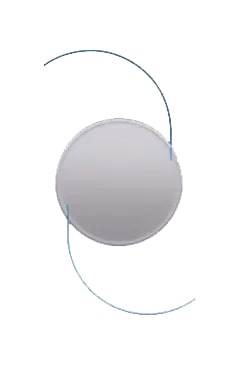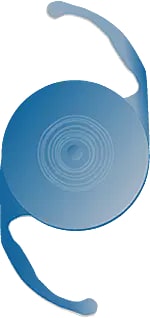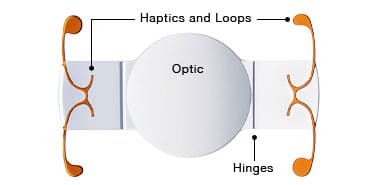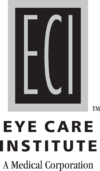About Lens Implant Options
Modern laser cataract surgery has reached a level of sophistication that allows rapid recovery and excellent vision. The use of new technology implants in cataract surgery has enabled us to customize a person’s optics to match their lifestyle. Nearsightedness, farsightedness, and astigmatism can be corrected as part of the cataract surgery process to reduce dependence on eyeglasses. Here is a brief description of the most popular lifestyle lens implant options.
Toric Lens Implant For Astigmatism
Most IOL (intraocular lens) implants are round or spherical in the way in which they bend the light to focus on the retina. The doctors at the Eye Care Institute have had great success with using a toric implant instead of a spherical lens for specific types and amounts of astigmatism. This implant incorporates an optical design that can correct up to several diopters of regular astigmatism. With the reduction of astigmatism during cataract surgery, patients can see better at distance or near and are much less dependent on prescription glasses. At the time of your cataract surgery assessment, please ask if you would be a candidate for this specific implant.

Multifocal Lens
Amo Technis® Multifocal Lens Implant
Alcon Acrysof® Restor® Multifocal Lens Implant
Standard lens implants have one focal point, meaning they focus for vision at one distance only (far, intermediate, or near). Multifocal implants offer the possibility of seeing well at more than one distance, with less dependence on glasses than the standard monofocal lens implant. The multifocal implants are manufactured to have two focusing distances: near reading and distance vision. Through the use of alternating diffractive technology, the eye can see at both distances and near without glasses. At night, unwanted glare and rings around lights can bother some patients. This is rarely a problem with the current generation of multifocal implants.

Many patients with no or minimal astigmatism are glasses-independent after the procedure. It is not possible to promise every patient that glasses won’t be necessary after surgery. However, in the studies submitted to the FDA, more than 80% of patients stated they no longer needed to wear glasses after having a multifocal lens implant placed after surgery. Those that did need to wear glasses were patients who needed glasses for intermediate vision only, such as for reading a computer or reading music.

Extended Depth Of Focus (EDOF) Lens
Amo Symfony® Lens Implant
In contrast to traditional multifocal intraocular lenses, which have two distinct focal distances, EDOF lenses create an elongated focal point to increase the range of vision, or depth of focus. They also employ advanced optics technology to maximize contrast sensitivity and image quality. Compared with multifocal lenses, the result is excellent distance vision that minimizes unwanted side effects such as glare and halos; better intermediate (computer) distance vision; and high levels of satisfaction with near vision.
Multifocal Lens
Eyeonics Crystalens® Implant
The Crystalens® implant has hinges on both sides of the IOL, which can be moved by the ciliary muscle, allowing the possibility that the eye will focus more naturally at a greater range of distances than traditional lens implants.

The Crystalens® lens implant best corrects vision for distance and intermediate, but objects at near distances may still be somewhat out of focus. The advantage of this lens implant compared with the multifocal lens implant is less night glare. Most patients, however, still will need reading glasses for small print or for viewing objects close up.
